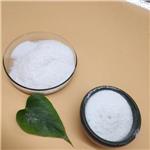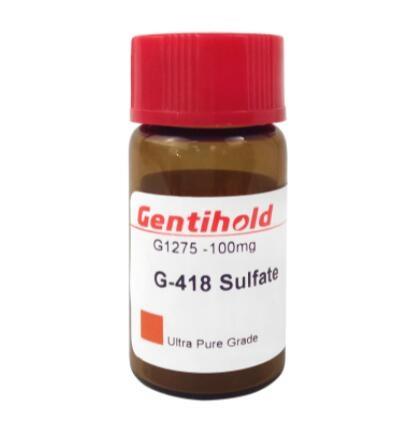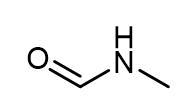Application and pharmacological studies of tetramisole hydrochloride
Aug 19,2022
General description
Tetramisole hydrochloride is white crystalline powder, odorless, bitter taste with astringent. It is soluble in water, methanol, slightly soluble in ethanol, very slightly soluble in chloroform, insoluble in acetone [1]. Its molecular formula is C11H12N2S.HCl, the molecular weight is 240.75, the melting point is 262-268 ℃, and the CAS number is 5086-74-8.

Fig. 1 The structure of teimidazole hydrochloride.
Use
Imidazole and its derivatives, as drug intermediates, occupy an important position in biology, medicine and organic chemistry. Tetramisole is a mixture of right-handed and left-handed isomers used as an insect repellent [2-4]. Especially, teimidazole hydrochloride is used as an intermediate of levamisole hydrochloride, and it can also be used as an antienteric drug, anti-helmintic drug, as well as roundworm, fishing worm and prevention of pinworm infection. Teimidazole hydrochloride is a heterocyclic molecule, which has been widely used in synthetic materials, drugs and artificial receptors. Derivatives of teimidazole hydrochloride are also widely used, such as resistance to various fungal bacteria, treatment of eye diseases, photocatalysis and solar energy conversion, strengthening curing ability of epoxy resin, detection of cyanide in water medium by visible light and near infrared, etc [5].
Teimidazole hydrochloride as a reliable intestinal anthelmintic has a significant effect on the removal of ascaris roundworm, hookworm and pyrethroid infection. It can also be used for filariasis, tumor and other diseases related to immune deficiency of the body [6-7]. As an anthelmintic with less toxicity and side effects, teimidazole hydrochloride by partial rotation is used for human beings. The tablets can improve a patient's resistance to bacterial and viral infections. In addition, it can be used for autoimmune diseases such as rheumatoid arthritis, lupus erythematosus, upper respiratory tract infection, hepatitis, bacillary dysentery, chancroid, abscess and so on. The effect on refractory bronchial asthma has been proved to be remarkable in the near term.
Simple imidazole rings play an important role in cancer treatment. A large number of clinical anticancer drugs based on imidazole have been successfully developed and marketed, and are widely used in the clinical treatment of various types of cancer with high efficiency and low toxicity [8]. Although the research has been a lot of achievements, undoubtedly, along with the continuous efforts devoted to imidazoles compounds in the field of cancer development, more and more good curative effect, low toxicity, and good pharmacokinetic properties based on imidazole anticancer drugs will be used for clinical purposes, and will make a significant contribution to protect human health [9].
In vivo studies
In one cow all 4 quarters were infected with 2 x 10(8) germs of Prototheca zopfii each. 2 quarters of it were treated over 6 subsequent milking times with 20 ml Tetramisole hydrochloride (4 mg/kg body mass) in each case. Clinical symptoms diminished within 3-24 hours after the first application in comparison with the control quarters distinctly. Macroscopic alterations in the treated quarters could be found for a short time only, whereas they were evident in the control quarters for up to 2 days. The milk cell counts were raised til the 5. day p.i. The number of Prototheca excreted by treated quarters in each ml initial milk was reduced to 38% and in each ml end milk to 67% in comparison with the 2 control quarters. A more potent reduction of Prototheca can be expected after the application of Levamisole hydrochloride. At the future therapy applications after every milking time for at least 3 days with 25-40 ml of the preparations in each quarter are recommended. A total dose per animal and application time of 150 ml preparations (6 g Levamisole hydrochloride=15 mg/kg body mass) must not be exceeded. Before Levamisole hydrochloride may be used for patients, susceptibility tests are necessary of the strains of Prototheca zopfii present and additional investigations for the reliability of the results hitherto obtained in one experimental Prototheca mastitis only [10-11].
In vitro studies
Tetramisole hydrochloride at 67.5 mg/kg is 88.8% effective against immature and 99.7% effective against adult Libyostrongylus douglassi of the ostrich. A dose of up to 408 mg/kg tetramisole hydrochloride had no adverse effects on young birds but at 529 mg/kg was lethal to both chicks and adult ostriches. The efficacy of pyrantel tartrate was erratic. At 50 - 60 mg/kg it was 72.3% effective against immatures and 50.2% effective against adult worms. At 100 mg/kg it fell to 43.6% against immature, but rose to 77.3% against adult worms. Pyrantel tartrate at 100 mg/kg caused the death .of three out of four chicks. The macroscopic lesions of the disease ""vrotmaag"" caused by L. douglassi are descriptionbed as well as some of the other pathological lesions observed at autopsy.
Determination in dosage forms
A facile, rapid and sensitive methods for the determination of tetramisole hydrochloride in pure and in dosage forms are described. The procedures are based on the formation of coloured products with the chromogenic reagents alizarin blue BB (I), alizarin red S (II), alizarin violet 3R (III) and alizarin yellow G (IV). The coloured products showed absorption maxima at 605, 468, 631 and 388 nm for I–IV, respectively. The colours obtained were stable for 24 h. The colour system obeyed Beer's law in the concentration range 1.0–36, 0.8–32, 1.2–42 and 0.8–30 μg ml?1, respectively. The results obtained showed good recoveries with relative standard deviations of 1.27, 0.96, 1.13 and 1.35%, respectively. The detection and determination limits were found to be 1.0 and 3.8, 1.2 and 4.2, 1.0 and 3.9 and finally 1.4 and 4.8 ng ml?1 for I–IV complexes, respectively. Applications of the method to representative pharmaceutical formulations are represented and the validity assessed by applying the standard addition technique, which is comparable with that obtained using the official method.
Tetramisole hydrochloride was determined by several techniques including spectrophotometry using different chromophoric reagents, e.g. 2,3-dichloro-5,6-dicyano-p-benzoquinone, 2,5,5,7-tetranitrofluoren-9-one, and 7,7,8,8-tetracyanoquinodimethane, fast green, orange II and other dyes. It has also been determined by the formation of coloured compounds with cobalt thiocyanate and sodium nitroprusside. The drug was assayed by ion selective electrodes using phosphotungstate and by HPLC using μ-Bonddapak C18 column with methanol–water–anhydrous acetic acid–trimethylamine (600:1400:40:1) as mobile phase and detection at 254 nm, or using Lichrosorb RP-8 with 1.0% concentrated H2SO4 in H2O–acetonitrile (4:1) as mobile phase and detection at 254 nm. Tetramisole has been identified by X-ray diffraction employing a Debye–Scherrer camera.
Expelling parasite effect
Critical and controlled anthelmintic tests were carried out using tetramisole hydrochloride per os against adult and immature gastro-entestinal nematodes of sheep. The drug was highly effective against adult Haemonchus contortus, Ostertagia spp, Trichostrongylus axei, intestinal Trichostrongylus spp, Nematodirus spp, Oesophagostomum columbi-anum and Chabertia ovina, and against 5th stage worms of the two latter species, at 10 mg/kg bodyweight and above. Efficiency against Trichuris ovis ranged from 67 to 100% at 20 mg/kg. A dose rate of 10 mg/kg was 98 to 100%
- Related articles
- Related Qustion
- Tetramisole Hydrochloride: An Overview for the Chemical Industry Dec 20, 2024
Tetramisole hydrochloride is a synthetic compound widely known for its applications in veterinary medicine and as an anthelmintic agent.
G418 (Geneticin) is an aminoglycoside antibiotic similar in structure to gentamicin B1. It is produced by Micromonospora rhodorangea.....
Aug 18,2022APIN-Methylformamide is an important organic chemical raw material and intermediate, and an organic solvent with good performance.....
Aug 19,2022APITetramisole hydrochloride
5086-74-8You may like
Tetramisole hydrochloride manufacturers
- Tetramidazole hydrochloride
-

- $160.00/ kg
- 2025-12-14
- CAS:5086-74-8
- Min. Order: 1kg
- Purity: 99%pure
- Supply Ability: 20 tons
- Tetramidazole hydrochloride
-

- $0.00 / 1kg
- 2025-12-14
- CAS:5086-74-8
- Min. Order: 1kg
- Purity: 99%pure
- Supply Ability: 20 tons
- Tetramisole hydrochloride
-

- $1.00 / 1kg
- 2025-12-14
- CAS:5086-74-8
- Min. Order: 1kg
- Purity: 99%
- Supply Ability: 1 ton






